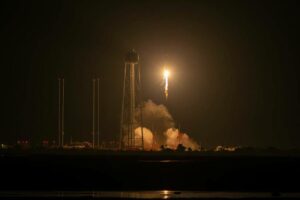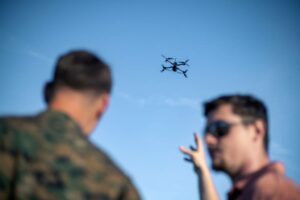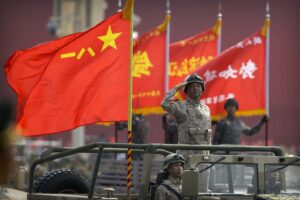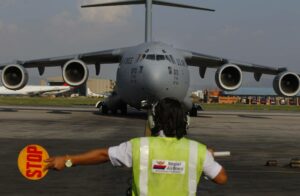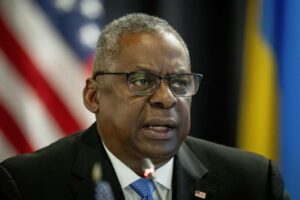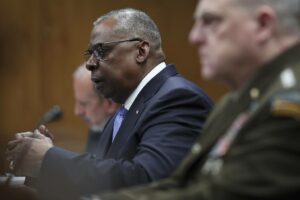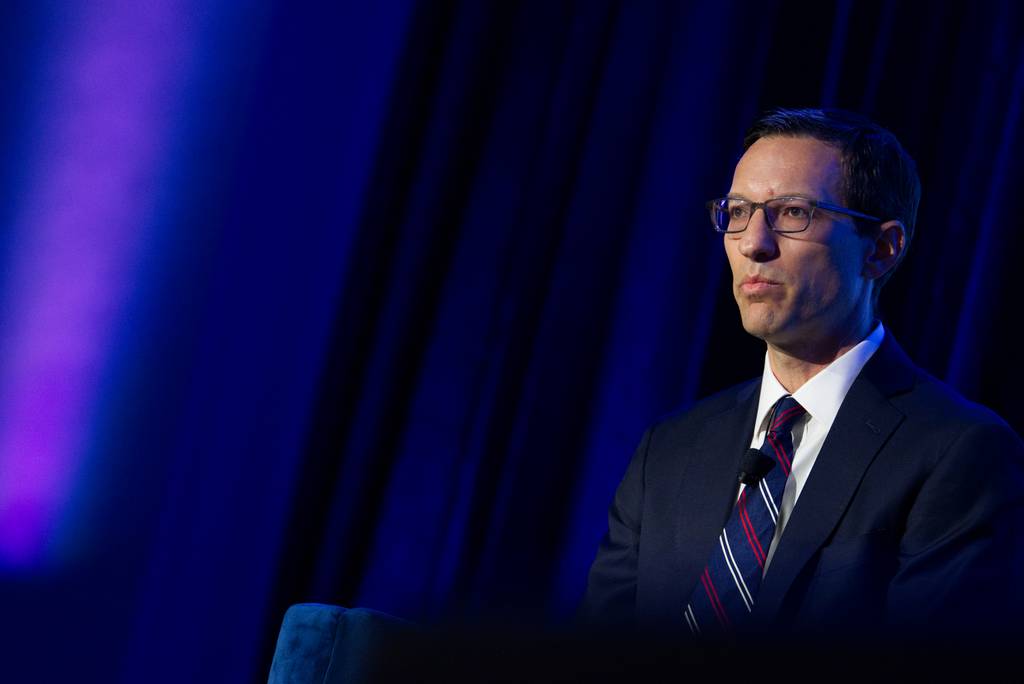
ARLINGTON, Va. — This February, U.S. Secretary of State Antony Blinken canceled a visit to China, during which he was scheduled to meet with its leader Xi Jinping, after a Chinese spy balloon had drifted slowly over the United States.
Since then, Blinken has rescheduled, and made, his trip — as have the secretaries of treasury and commerce. And last week, news broke that Adm. John Aquilino, commander of U.S. Indo-Pacific Command, met with Chinese representatives at a conference in Fiji last month.
It seemed like a potential thaw in the long-troubled military-to-military communications between China and the United States. Not so, according to Ely Ratner, the Pentagon’s top official for the Indo-Pacific region, speaking at the Defense News Conference in Arlington, Virginia.
“Those are all and well,” he said of the meetings, in addition to his own conversations with the Chinese ambassador in Washington. “I don’t think those are a substitute for leader-level engagement.”
The United States, Ratner said, has offered to restart military channels, which China suspended last August, after then-Speaker of the House Nancy Pelosi visited Taiwan. China has rejected such offers, citing U.S. sanctions against its top military official as a reason.
“We have been brutally consistent … in saying again and again the United States seeks open lines of communication with the PRC [People’s Republic of China],” Ratner said. “They have turned those on and off like a light switch for political reasons.”
China considers the island nation of Taiwan as a renegade province that Beijing has threated to take back by force. Xi has reportedly instructed his military to reach sufficient strength to invade the island by 2027. The Pentagon’s annual China Military Power Report, which assesses such capabilities, is set for release in mid-October, Ratner said.
Military communications matter because of the potential for crisis in the region. The Chinese and U.S. militaries operate in the same areas, with potential for an accidental confrontation to spiral. Ratner said China has increased its number of unsafe intercepts of the U.S. and its allies and partners in recent years. Open dialogue can help dim escalation, he argued.
“It’s dangerous, and the PLA [People’s Liberation Army] has got to knock it off,” he said.
As a comparison, Ratner invoked the U.S. and Soviet Union’s relationship during the Cold War, but cautioned that the parallel is incomplete. The two sides at the time had opened backchannels to avoid accidental conflict during their decades of competition. But those only began after the Cuban Missile Crisis, which may be the closest the world has ever come to nuclear war.
The events following Pelosi’s visit to Taiwan last summer, during which China fired missiles over the island and increased its tempo of military exercises, and this year’s balloon incident, could be considered crises on their own — though perhaps not at the level of 1962. So far, those events have failed to restart military channels. Ratner said he hopes further escalation isn’t necessary for that to begin.
“The question for the PRC is: Do we have to wait to have such a dangerous crisis before they realize the benefits of that kind of engagement?” Ratner said. “Our hope is not.”
Noah Robertson is the Pentagon reporter at Defense News. He previously covered national security for the Christian Science Monitor. He holds a bachelor’s degree in English and government from the College of William & Mary in his hometown of Williamsburg, Virginia.
- SEO Powered Content & PR Distribution. Get Amplified Today.
- PlatoData.Network Vertical Generative Ai. Empower Yourself. Access Here.
- PlatoAiStream. Web3 Intelligence. Knowledge Amplified. Access Here.
- PlatoESG. Automotive / EVs, Carbon, CleanTech, Energy, Environment, Solar, Waste Management. Access Here.
- PlatoHealth. Biotech and Clinical Trials Intelligence. Access Here.
- ChartPrime. Elevate your Trading Game with ChartPrime. Access Here.
- BlockOffsets. Modernizing Environmental Offset Ownership. Access Here.
- Source: https://www.defensenews.com/pentagon/2023/09/06/despite-cracks-no-thaw-in-us-china-military-comms-pentagon-says/
- :has
- :is
- :not
- 70
- 9
- a
- According
- addition
- After
- again
- against
- All
- Ambassador
- an
- and
- Antony Blinken
- ARE
- areas
- argued
- Army
- AS
- assesses
- At
- AUGUST
- avoid
- back
- BE
- because
- been
- before
- began
- begin
- Beijing
- benefits
- between
- Broke
- but
- by
- CAN
- canceled
- capabilities
- channels
- China
- china military
- chinese
- cold
- College
- come
- Commerce
- Communication
- Communications
- comparison
- competition
- Conference
- conflict
- considered
- considers
- consistent
- conversations
- could
- covered
- crises
- crisis
- cuban
- Dangerous
- decades
- Defense
- Degree
- Despite
- dialogue
- do
- Dont
- during
- engagement
- English
- escalation
- Ether (ETH)
- events
- EVER
- Failed
- far
- February
- fired
- following
- For
- Force
- from
- further
- got
- Government
- had
- Have
- he
- help
- his
- holds
- hope
- hopes
- House
- HTTPS
- images
- in
- increased
- Invade
- invoked
- island
- IT
- ITS
- Jinping
- John
- jpg
- Kind
- Last
- leader
- Level
- liberation
- light
- like
- lines
- made
- Matter
- May..
- Meet
- meetings
- met
- militaries
- Military
- missiles
- Monitor
- Month
- nancy pelosi
- nation
- National
- national security
- necessary
- news
- no
- nuclear
- number
- of
- off
- offered
- Offers
- official
- on
- only
- open
- opened
- operate
- over
- own
- Parallel
- partners
- Pelosi
- pentagon
- people’s
- perhaps
- plato
- Plato Data Intelligence
- PlatoData
- political
- potential
- power
- PRC
- previously
- question
- Ratner
- reach
- realize
- reason
- reasons
- recent
- region
- Rejected..
- relationship
- release
- reporter
- Representatives
- Republic
- s
- Said
- same
- Sanctions
- saying
- says
- scheduled
- Science
- secretary
- security
- Seeks
- seemed
- set
- Sides
- Slowly
- So
- so Far
- speaking
- State
- States
- strength
- such
- sufficient
- summer
- suspended
- Switch
- Taiwan
- Take
- Tempo
- that
- The
- the world
- their
- then
- they
- think
- this
- those
- though?
- time
- to
- top
- treasury
- trip
- Turned
- two
- u.s.
- United
- United States
- virginia
- Visit
- visited
- wait
- war
- was
- washington
- we
- week
- WELL
- which
- william
- with
- world
- xi
- xi jinping
- years
- zephyrnet


